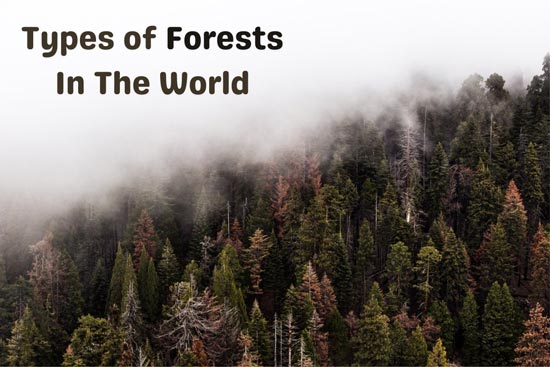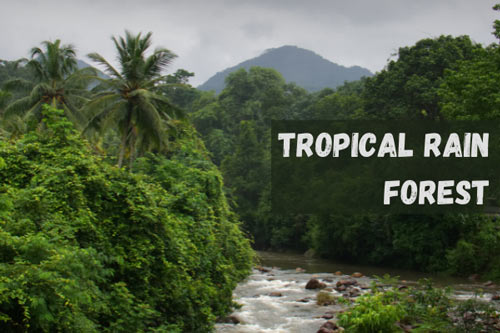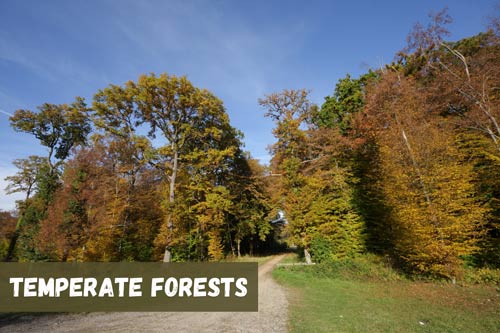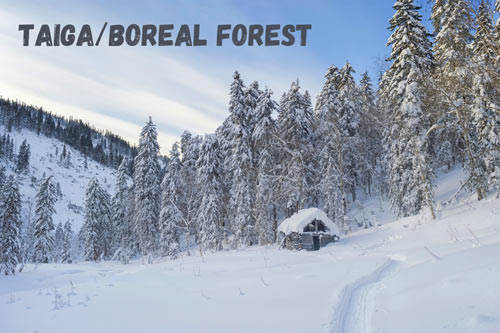Different Types of Forests in the World
How Many Types of Forests Are There?
1/3rd of the earth’s land area is occupied by forest, which hosts an estimate of 3 trillion trees, and many are yet to be discovered. This vast forest contains about 70 percent of the carbon present in living things; to be specific, it is around 296 gig atones of carbon in both above and below grown biomass.
1.6 billion peoples around the world depend on the forest for their daily needs and survival. Forests are vital to counter global warming as they can cool the air by up to 8°.
However, civilization and exponential population growth are a major threat to forests; it brings pollution, deforestation and industrial usage problems, which is concerning. That’s why we need to know about the different types of forests present around the world, their characteristics, features, and diversity.
Table of Contents
How Many Types of Forests Are There in The World?
Generally, there are three types of forests globally: tropical forest, temperate forest, and boreal forest.
Tropical Forest
The forest that grows around the equator with great diversity is called a tropical forest. It is within the equatorial area, around 23.5° north and 23.5° south. It is spread across the equator in Africa, Southeast Asia, and South America. Even though the equator area is small compared to the overall forest area worldwide, it still has the highest species diversity.
You can find as many as a hundred different tree species within one square kilometer. In the topical region, only two main seasons are present, rainy and dry, winter is absent here, and it gets approx. 12 hours of daylight. It rains a lot here, with annual rainfall exceeding 200cm, and the temperature is more or less remains within the range of 20°- 25°. Among different types of forests globally, the tropical rain forest is the richest and diverse because this kind of weather promotes the growth of many different plants.
Features of Tropical Rain Forest
- One square kilometer of an area can contain around 100 different species of trees.
- The trees are 25-35 meters tall, and they grow very densely. The branches and the leaves don’t allow much light to penetrate and reach the ground.
- Trees are mostly evergreen and consist of large dark green leaves. Other than that, orchids, bromeliads, mosses, ferns, vines, and palm trees are also found in the tropical forest.
- This diverse flora supports various fauna, and most of them adapted to life in trees, like monkeys, snakes, lizards, frogs, small mammals, birds, and insects.
- It is obvious to think that the soil might be very rich because it supports too much life. But it is not the case as soil/ nutrient leaching is a problem. The soil lacks most of the essential nutrients, and it is acidic. Only the uppermost thin layer contains all the nutrients that come from decaying plant and animal materials.
- Among other different forest types, 25 percent of medicines that we currently use originated from the tropical rain forest. And the interesting thing is, only 1 % of rainforest plants have been studied for therapeutic uses.
Sadly, more than half of the tropical rain forests have already been destroyed.
Other Subcategories Under Tropical Rain Forest:
- Evergreen – no dry season present, rain through the year.
- The seasonal – very short dry season, mostly rainy and wet tropical region that promotes evergreen forest. But as the forest exhibits definite seasonal changes, the trees also undergo development simultaneously.
- Dry – prolonged dry season present, and trees are deciduous.
- Montane – the precipitation is mostly from mist and fog and not from rainfall. This type of forest is often called the cloud forest.
- Tropical and subtropical coniferous – the climate is dry and warm. Conifers are found here, which are adapted to variable weather.
- Sub-tropical – the north and south of tropical forests are considered sub-tropical forests; the trees are adapted to the dry summer season.
Temperate Forests
Among other different types of forests, the temperate forest is found in the next latitude ring after the tropical rainforest. It occurs in North America, Northeastern Asia, and Europe. The seasonal changes are well defined, and it has four distinct seasons with a prominent winter; This gives it 4-6 frost-free months with 140-200 days for growing.
The climatic condition is moderate, and the temperature ranges from -30° – 30° Celsius. The precipitation is well distributed throughout the year, and it receives 75-150 cm of rain annually.
Features of Temperate Forests
- The forest is deciduous, which means the trees are of leaf-shedding types. The leaves change color with seasonal change and fall during the winter.
- Temperate forest makes up a large proportion of the tree composition around the world.
- The soil is abundant in nutrients and fertile, and it is because of decaying plant and animal remains.
- The canopy is dense but not like a tropical rainforest. It allows light to reach the forest bed. It results in well-developed and diverse ground vegetation with stratification of the animal.
- It is not that diverse like a tropical rain forest, but it contains 3-4 tree species per square kilometer. It includes oak, hickory, maple, cottonwood, basswood, beech, hemlock, willow, elm, and spring-flowering herbs.
- The temperate forest is home to rabbits, squirrels, skunks, birds, mountain lions, bobcats, deer, timber wolves, foxes, coyotes, and black bears.
- Many trees of this region contain sap, which protects the root from drying out and freezing during the winter.
- As different well-defined seasons are present, the animals of temperate forests are extremely adaptive to seasonal changes.
- The biome of temperate forests can be subdivided into five different zones. The zones are dependent upon the height of the trees.
Other Subcategories Under Temperate Forest
- Moist conifer and evergreen broad-leaved – Mild winter with concentrated rain and dry summers.
- Dry conifer – Precipitation is low, and the forest present at a higher elevation.
- Mediterranean – Located more to the south of the temperate region, around the coastal area. Almost all the trees are evergreen.
- Temperate broad-leaved rainforest – Frost-free mild winter is present with high precipitation, evenly distributed throughout the year. Trees are evergreen.
Boreal Forests
The boreal forest, also known as taiga forest, occurs between 50- and 60-degrees’ north latitude. It is generally found in Eurasia and North America’s broad belt, specifically Siberia, Scandinavia, Alaska, and Canada.
Features of the Boreal Forest:
- Two seasons are present, one is moist and mild summer, which is very short, and the other is long, cold, dry winter.
- The temperature can drop below -40° and could go high as 20° Celsius.
- Precipitation is less, around 40-100 cm annually, and it is not from rain but mostly delivered as snow.
- Canopy is dense and doesn’t let light pass through; that’s why the understory is limited.
- Trees are evergreen conifers with needle-shaped leaves that best adapt to the cold winter. Trees found here are pine, spruce, and fir.
- You can find a woodpecker, hawks, bear, moose, lynx, weasel, fox, deer, hares, wolf, shrews, and bats in the boreal forest.
- But just like other different types of forests, extensive logging may soon cause the boreal forest’s disappearance.
These were the main different types of forests with names and pictures. If you like it do comment below and share it with your friends.



